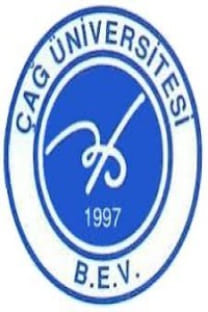Empowering K-12 Learners for Global Challenges Through STEAM(M): Reflections from a Turkish Context
Anahtar Kelimeler:
Global challenges, K-12 education, media, STEAM, 21st-century learners
Empowering K-12 Learners for Global Challenges Through STEAM(M): Reflections from a Turkish Context
STEM and STEAM practices in K-12 curriculums educate learners to be competent, adaptable, resilient, critical, and globally considerate and conscious individuals who use information from different sources as a necessity of the fast-paced digital and complex world. As an innovative approach, STEAM visibly combines school subjects, whereas media, which interconnects the world in this era, does so invisibly. It is essential to integrate media into STEAM (henceforth STEAM(M)) in K-12 education so 21st-century learners can meet emerging global challenges. With this study, we aimed to highlight the need to integrate media into STEAM and stimulate interest among both teachers and students. In doing so, we share our reflections on STEAM practices emphasising the visibility of media in K-12 formal education with its drawbacks and potential benefits. The project followed the framework of a collaborative action research project with two researchers from a university and five K-12 teachers and their 7th-grade learners from a secondary school in Turkey participating in the project. The results implicated that K-12 teachers must be provided with practical training on STEAM(M) applications and the resources needed to create appropriate environments for collaboration within the school. We conclude with reflective remarks concerning the integration of media and STEAM practices in the K-12 curriculum in Turkey.
Keywords:
Global challenges, K-12 education, media, STEAM, 21st-century learners,
___
- Bennett, P., McDougall, J., & Potter, J. (2020). The Uses of Media Literacy, Routledge, New York.
- Buckingham, D. (2003). Questioning the Media: A Guide for Students. UNESCO: Education Curriculum Mediterranean.
- Donovan, L., Green, T. D., & Mason, C. (2014). Examining the 21st century classroom: developing an innovation configuration map. Journal of Educational Computing Research, 50(2): 161-178.
- Harris, A., & de Bruin, L. (2017). STEAM education: Fostering creativity in and beyond secondary schools. Australian Art Education, 38(1): 54–75.
- Herro, D., Quigley, C., Andrews, J., & Delacruz, G. (2017). Co-measure: Developing an assessment for student collaboration in STEAM activities. International Journal of STEM Education, 4(1).
- Karahan, E., Bilici, S. C., & Ünal, A. (2015). Integration of media design processes in science, technology, engineering, and mathematics (STEM) education. Eurasian Journal of Educational Research, 15(60), 221-240.
- Khine, M. S., & Areepattamannil, S. (2019). STEAM Education: Theory and practice, Springer, London.
- Liao, C. (2016). From interdisciplinary to transdisciplinary: An arts-integrated approach to STEAM education. Art Education, 69(6): 44-49.
- Long, R., & Davis, S. (2017). Using STEAM to increase engagement and literacy across disciplines. STEAM, 3(1): 1-11.
- McDougall, J., Zezulkova, M., van Driel, B., Sternadel, D. (2018). Teaching Media Literacy in Europe: Evidence of Effective School Practices in Primary and Secondary Education, NESET II report. Luxembourg: Publications Office of the European Union.
- McDougall, J. & Ward, H. (2017). Embedding Media Literacy across the Secondary Curriculum, United Kingdom Literacy Association, Leicester.
- Mihailidis, P. (2014). Media Literacy and the Emerging Citizen: Youth, Engagement and Participation in Digital Culture, Peter Lang Inc., International Academic Publishers.
- Perignat, E., & Katz-Buonincontro, J. (2019). STEAM in practice and research: An integrative literature review. Thinking Skills and Creativity, 31, 31-43.
- Phenow, D. (2018). Creating a 21st century library media scope and sequence [Unpublished master's thesis]. St. Cloud State University.
- Potter, J. (2015, February 26). Forward to the new age of STEAM(M)! Digital media, education and computing. Media literacy, learning and curating. Retrieved from https://digitalcurationandlearning.com/2015/02/25/forward-to-the-new-age-of-steamm-digital-media-education-and-computing/
- Quigley, C. F., & Herro, D. (2016). “Finding the joy in the unknown”: Implementation of STEAM teaching practices in middle school science and math classrooms. Journal of Science Education and Technology, 25(3): 410-426.
- Taylor, P. C. (2016, August 09). Why is a STEAM curriculum perspective crucial to the 21st century? [Paper presentation]. Research Conference 2016 - Improving STEM Learning: What will it take? Retrieved from https://research.acer.edu.au/research_conference/RC2016/9august/6
- Yakman, G. (2008). STΣ@M education: An overview of creating a model of integrative education. Pupil’s Attitudes Towards Technology (PATT) Annual Proceedings. Retrieved from https://www.researchgate.net/publication/327351326_STEAM_Education_an_overview_of_crea ting_a_model_of_integrative_education
- Yakman, G., & Lee, H. (2012). Exploring the exemplary STEAM education in the U.S. as a practical educational framework for Korea. Journal of The Korean Association for Science Education, 32(6): 1072-1086.
- ISSN: 1304-8392
- Yayın Aralığı: Yılda 2 Sayı
- Başlangıç: 2004
- Yayıncı: Çağ Üniversitesi
Sayıdaki Diğer Makaleler
Covid-19’a Yönelik Komplo Teorilerinin Aşı Tereddüdüne Etkisi: Aşı Tutumunun Aracı Rolü
Yalçın KARAGÖZ, Fuat YALMAN, Yusuf KARAŞİN
Fatma DEMIRCI OREL, Abdil ARIK, İbrahim Doğan ARSLAN
Understanding Foreign Language Teachers’ Professional Identities Through the Use of Metaphors
Empowering K-12 Learners for Global Challenges Through STEAM(M): Reflections from a Turkish Context
Şehnaz ŞAHİNKARAKAŞ, Fatma TOKÖZ GÖKTEPE
Mersin Kent Merkezindeki Türbelerin Günübirlik Kent Turu Programlarına Dâhil Edilmesi
